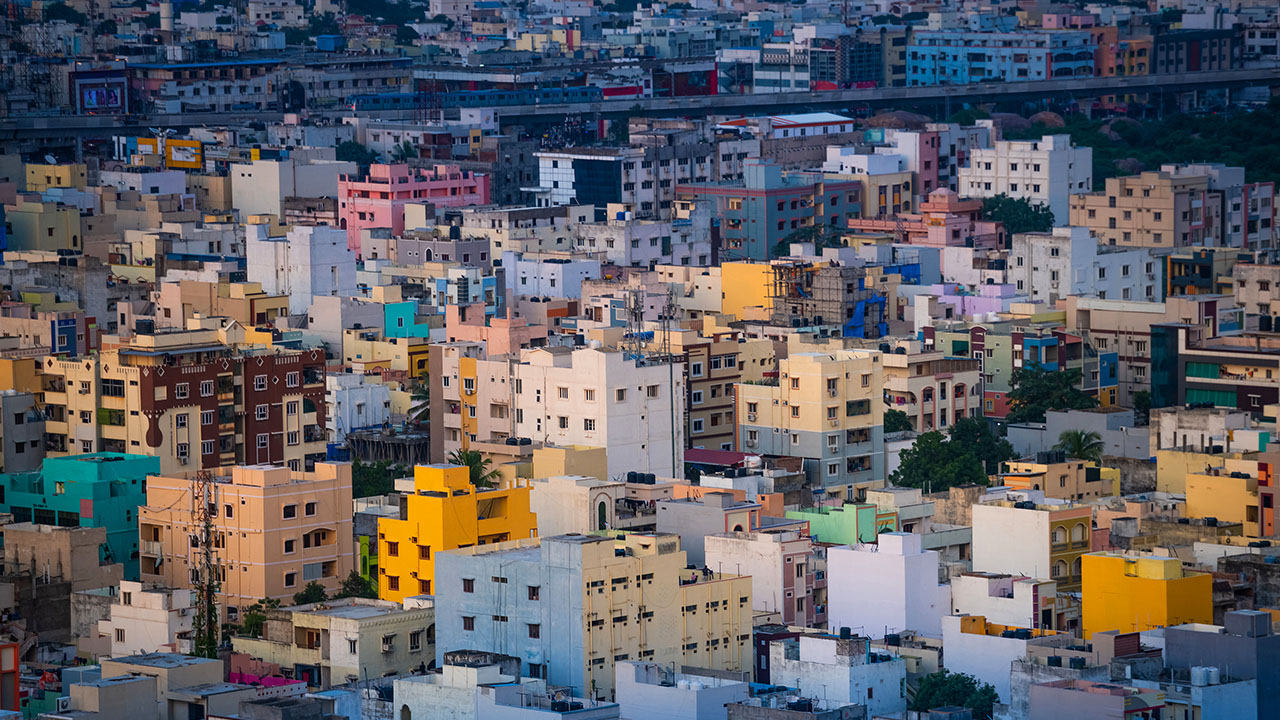
India has unseated its former oppressor, Great Britain, as the world’s fifth-largest economic power.
Each of the records India breaks are symbols the Narendra Modi government is leveraging to make the Great Leap Forward with Indian characteristics.

Symbols rule the world. They represent a higher reality and therefore push us beyond our strength and our own reality. A person, an object, or an event can be symbolic. For example, Gandhi was the forerunner and icon of independence movements for a generation and the Black Stone of Mecca attracts millions of Muslim pilgrims each year. In 1905, Japan defeated Russia, becoming the first Asian country to overcome a Western power – an event that cemented Japanese nationalism and its subsequent imperialist path. In 2022, India unseated its former oppressor, Great Britain, as the world’s fifth-largest economic power. Perhaps it has also become a symbol of a new order.
The Hindu nationalist Indian Prime Minister, Narendra Modi, could only have been referring to this when he commented that India had left behind those who had ruled it for 250 years, and that rather than moving from sixth to fifth place, the joy was in having left behind 1,000 years of slavery. We will not stop, he concluded.
There is a lot of talk about the new multipolar world order, but the truth is we have not yet broken the bipolar inertia of the Cold War, with most matters being settled between China and the United States. It is in this context that Indian soft power, and its aura of a non-aligned country, is necessary to resolve the international challenges we face.
Since Modi came to power in 2014, he has moved India away from its traditional moderate line and been more assertive on the international political stage. The country and its economy seem to be on an unstoppable climb to the top. Furthermore, India, equipped with nuclear power in the backyard of China, is going to change the rules of the international geopolitical game. Modi has not yet, however, properly outlined what kind of soft power India will wield.
Modi has abandoned white-collar diplomacy.
In contrast, a striking aspect of Chinese soft power is that it makes continuous references to its hard power, especially in recent years. As a result, major initiatives such as the New Silk Road, or Belt and Road Initiative are viewed with suspicion rather than as major infrastructure improvement projects from which countless countries will benefit, as political scientist Parama Sinha Palit points out in her book Analysing China′s Soft Power Strategy and Comparative Indian Initiatives.
India first
Politically, India is making its voice heard like never before. Modi has abandoned white-collar diplomacy. For example, he had no qualms avoiding Xi Jinping at the Shanghai Cooperation Organization this past September – when Xi was the host of the event. This comes after Modi openly admitted to speaking with the Dalai Lama , an act that always draws anger from China. Likewise, India has not only banned TikTok and 58 other Chinese apps but excluded Chinese companies from public tenders for 5G.
Since the Sino-Indian war in 1962, relations between India and China were more or less peaceful – until 2020 when 20 Indian soldiers died in a dispute on the Himalayan border. In addition to the insult of casualties, the Indian authorities considered the clash to be a consequence of an increasingly aggressive Chinese policy, which does not sit well with Modi’s Indian nationalism nor the renewed economic status of emerging India. In its recent rapprochement to India, the United States may be making the most of Kautilya’sRajamandala theory that your neighbor is your enemy and your neighbor’s neighbor is your friend.
Modi also exercises his firmness and realpolitik beyond India’s borders. During the SCO summit in Uzbekistan in September 2022, he told Putin that it was not the time for war, all while pragmatically buying Russian oil at bargain basement prices. His foreign minister, SubrahmanyamJaishankar, justified this by stating, “I have a country with a per capita income of $2,000. “It was my moral duty to secure the best price.”
Chindia
As different as China and India may be, they also have much in common – a point that could be decisive for the future of humanity. To begin with, both are millenary civilizations, proud of their past, and each occupies a vast and densely populated territory. In terms of the market, India’s complete incorporation into international production and consumption channels will influence world economic indices in all sectors, from tourism to technology, as has happened with China.

Indian development follows in the footsteps of China’s. The Make in India initiative mimics the Made in China policy of the 1980s and is accompanied by a battery of economic measures with subsidies and incentives that are aimed at wresting the title of world manufacturing hub from China.
Apple’s announcement that it will produce the iPhone 14 in India is a radical change in the company’s production policy, but companies abhor conflict as much as nature abhors a vacuum. So, to avoid supply chain disruptions stemming from both China-America tensions and China’s Covid-zero policies, manufacturers are looking to diversify their risks by shifting their production sites to the Indian Ocean. Other companies like Cisco, Adobe, and FedEx are following suit. Apple is also encouraging suppliers of Airpods and Beats headsets to move production to India (from Vietnam).
Development with Indian characteristics
India aspires to become a global technology hub, like its northern neighbor but with Indian characteristics. China’s transition from world factory to technology hub was largely driven by the Chinese government, first, by encouraging foreign companies to open offices in China since the time of Deng Xiaoping to create an atmosphere conducive to the creation of companies; and second, by sending students to US universities.
The Indian model has not been quite as centrally planned as the initiative once taken by the Chinese government, but huge numbers of Indian students do indeed have US science degrees. More than half of all international students in the United States are attending STEM programs. Once graduated, these students are at the disposal of US immigration laws because the H-1B visa allows American companies to hire skilled foreign workers. Nearly 80% of these visas were granted to Indians. China was second with 12%. In terms of gender, only 20% of Indians were women, compared to 45% in the case of China.
According to the Chinese Ministry of Education, 80% of Chinese students who study internationally return home. Chinese entrepreneurs prefer to create their companies in China, for example Tencent (owner of WeChat), Alibaba (the Amazon of China), and Xiaomi (the rising star of mobile). In contrast, India has a brain-drain problem. The country has the highest number of its population living abroad, 17.5 million, and is known to have the highest number of CEOs among the world’s top companies: Arvind Krishna, IBM; SundarPichai, Google LLC & Alphabet; Satya Nadella, Microsoft; Leena Nair, Chanel. Until recently Parag Agrawal was at the helm of Twitter.

India is on a roll and cities like Chennai, Hyderabad, and Bangalore are at the forefront of technological advances in Asia and put a sense of renewal and optimism in the air, a sense of confidence that the country can hold its own. The Times of India boasted just a month ago that India beat China in the creation of unicorns in the first half of 2022, 14 to 11. The unicorn race is still led by the United States, of course, with 138 more unicorns in the same period. However, the growth numbers in Asia are impressive and, as Ashish Dave of Mirae Venture Asset Investments wrote, India’s startup market is proving to be an attractive post-pandemic option.
Of course, India has immense political, social, and economic challenges ahead of it. The country is often referenced as a giant with feet of clay. But, it cannot be ignored that the axis mundi has turned eastward. China was once, in fact, called a dragon with feet of clay but it has proven us wrong with its meteoric rise, and in all likelihood India will follow the dragon and also break record after record.
At the moment, the Indian government is confident that the Indian economy will grow more than 7% this year, well ahead of its competitors (including Britain, which will struggle to reach 3.5%). Each of the records India breaks are symbols the Narendra Modi government is leveraging to make the Great Leap Forward with Indian characteristics. Symbols are uncannily capable of uniting magnitudes in contrast, and few countries have as many contrasts as India.
This article was originally published on IE Insights under the title India´s symbolic rise.
